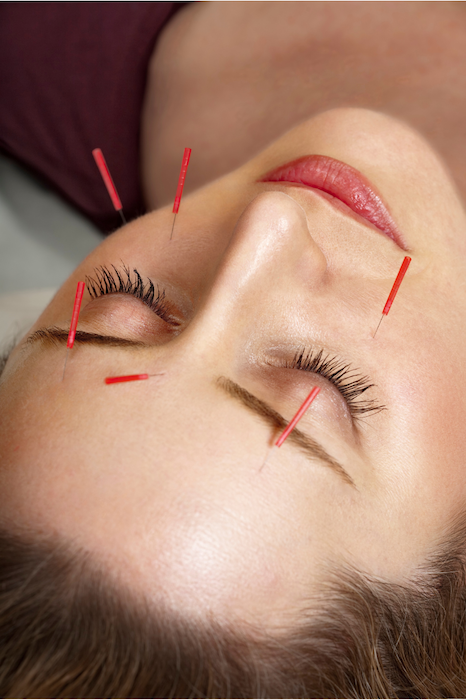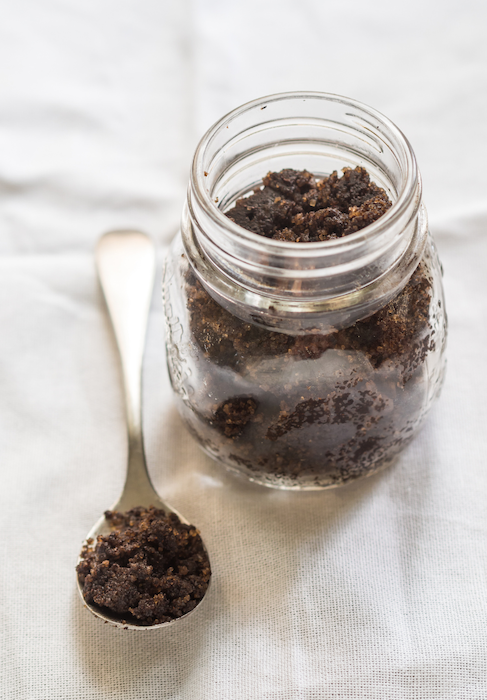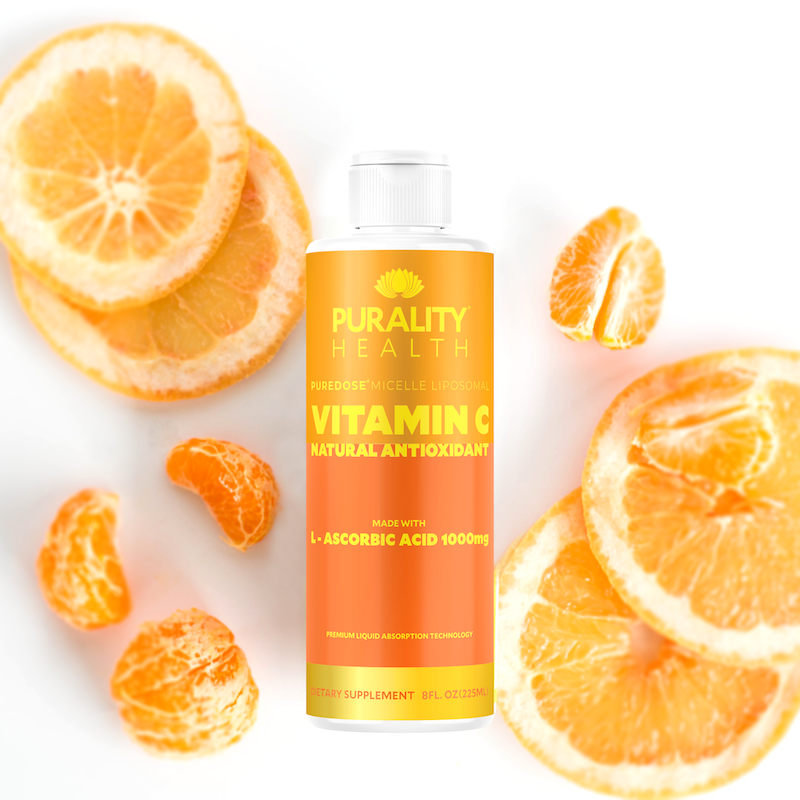Author: everbella
14 Self-Care Tips For Migraines
If you suffer from migraines, then you know that they can be debilitating. Not only do they cause pain and throbbing in your head, but they can also make you feel nauseous and lightheaded. In some cases, migraines can even lead to vomiting or extreme fatigue.
I don’t want you or anyone you know to have to suffer through migraines. That’s why I wrote today’s article on how to help. If you want to try to prevent, reduce, or calm migraines, then follow these 17 self-care tips!
1. Spend time in nature
According to a study published in the journal Headache, spending time in nature can help to reduce the frequency and intensity of migraines. The study found that participants who spent at least two hours per week in green space experienced fewer migraines than those who didn’t. The researchers believe that the peaceful environment and fresh air may help to relax the mind and reduce stress levels, which can trigger migraines. In addition, being in nature can also help to increase levels of serotonin, a chemical that helps to regulate mood. So next time you’re feeling a migraine coming on, head to your nearest park for some fresh air and relaxation!
2. Keep a symptom journal
For people who suffer from migraines, managing the condition can feel like a never-ending battle. There are a variety of potential triggers, and it can be difficult to identify patterns without keeping careful track. This is where a symptom journal can be an invaluable tool.
By taking note of when migraines occur, what symptoms are present, and what possible triggers may have been present, it becomes much easier to start identifying patterns. Once patterns are identified, it becomes possible to take steps to avoid triggers and minimize the frequency and severity of migraines. For many people, keeping a symptom journal is an essential part of effectively managing migraines.
3. Drink enough water

Migraines can be debilitating, and often seem to strike without warning. While there is no surefire cure for migraines, there are certain things that can help to lessen their frequency and intensity. One of the most important is staying hydrated.
Dehydration is a common trigger for migraines, so it’s important to drink plenty of water throughout the day. Aim for eight glasses of water per day, and make sure to drink even more if you are exercising or sweating profusely. In addition, try to avoid dehydration by avoiding caffeine and alcohol, which can both contribute to dehydration. If you are susceptible to migraines, staying hydrated is essential in helping to prevent them.
4. Eat on a regular schedule
One of the most important ways to lessen the frequency and severity of migraines is to eat on a regular schedule. Skipping meals or going too long without food can trigger a migraine, so it’s important to eat breakfast, lunch, and dinner at roughly the same time each day. This will help to keep your blood sugar levels stable and prevent hunger headaches. If you stick to a healthy, regular eating schedule, you may find that your migraines become less frequent and less severe.
5. Limit alcohol
Research has shown that drinking alcohol is a trigger for nearly one-third of people who experience migraines. If you’re trying to reduce your migraine attacks, limiting your alcohol intake can be an effective strategy.
It’s important to note that not all types of alcoholic beverages are equally likely to trigger migraines. For example, red wine is a common trigger, while vodka is less likely to cause problems. So if you enjoy the occasional drink, opting for clear liquor may be a good option.
Of course, the best way to prevent migraines is to avoid all triggers. But if you enjoy the occasional drink, knowing which beverages are more likely to cause problems can help you make choices that will minimize your risk of a migraine attack.
6. Have good sleeping habits
Most people don’t realize that the quality of their sleep has a direct impact on their migraines. In fact, studies have shown that having good sleeping habits can help reduce the frequency and intensity of migraines. Here are some tips to help you get a good night’s sleep:
First, make sure that your bedroom is dark and quiet. This will help your body relax and make it easier to fall asleep. Second, establish a regular sleep schedule and stick to it as much as possible. This means going to bed and waking up at the same time every day, even on weekends. Finally, avoid caffeine and alcohol before bed, as these can interfere with your sleep.
By following these simple tips, you can help improve your sleep quality and reduce the incidence of migraines.
7. Consider acupuncture

Acupuncture is a 3000 year old Chinese medical practice that involves the insertion of thin needles into the body at specific points. According to traditional Chinese medicine, this helps to improve the flow of energy or “qi” in the body. While acupuncture has been used to treat a variety of conditions, recent studies have shown that it can be an effective treatment for migraines.
One study found that acupuncture was more effective than medication in reducing the frequency and severity of migraines. In addition, acupuncture is believed to be a safe treatment with few side effects. This is important because many migraine medications come with a long list of potential side effects. Finally, acupuncture is a drug-free option for those who are looking for an alternative to medication. If you are suffering from migraines, talk to your doctor about whether acupuncture might be right for you.
8. Reduce screen time
Staring at a screen all day can cause eye strain, which in turn can lead to a migraine. Additionally, the blue light emitted by screens can disrupt your natural sleep cycle, making you more susceptible to migraines. Reducing your screen time can help to lessen the frequency and severity of migraines. By taking breaks throughout the day to give your eyes a rest, and avoiding screens for at least an hour before bedtime, you can help to reduce your risk of migraines.
9. Avoid lights and noise
One of the most effective ways to reduce the severity of a migraine is to avoid bright lights and loud noises. These stimuli can trigger a migraine or make existing symptoms worse. If possible, try to stay in a dark, quiet room until the migraine has passed. Additionally, you may want to consider wearing earplugs or an eye mask to further reduce exposure to potential triggers. While it is not always possible to completely avoid all light and noise, minimizing exposure can help to ease the discomfort of a migraine.
10. Stay active
Regular exercise has been shown to help reduce the frequency and severity of migraines. Exercise helps to release endorphins, which have natural pain-relieving properties. In addition, exercise can help to reduce stress levels and improve sleep quality, both of which can help to prevent migraines. Even if you don’t suffer from migraines, being active is always a good idea!
11. Try a hot or cold compress
Another good treatment for migraines is the use of hot or cold compresses. Applying a warm compress to the forehead and temples can help to soothe migraine pain, while a cold compress can help to reduce inflammation. Some people find relief by alternating between hot and cold compresses, while others find that one or the other works best for them. Whichever approach you choose, be sure to wrap the compress in a towel to avoid causing any further irritation. With a little trial and error, you should be able to find a method that provides some relief from your migraines.

12. Deep breathing exercises
Slow, deep breathing helps to relax the body and relieves stress. In addition, it increases the flow of oxygen to the brain, which can help to reduce inflammation and ease pain. While deep breathing exercises won’t cure migraines, they can help to reduce the frequency and severity of attacks. For best results, practice deep breathing exercises on a regular basis, even when you’re feeling well. That way, you’ll be prepared the next time a migraine strikes.
13. Cut down on caffeine
Caffeine is a common trigger for migraines, and cutting back on coffee, tea, and soda can help reduce the frequency and severity of headaches. Caffeine withdrawal can also cause headaches, so it’s important to cut down gradually rather than going cold turkey. If you typically drink a lot of caffeine, start by cutting back to one cup a day, and then eventually eliminating it completely from your diet. During headache episodes, avoid all forms of caffeine, as even small amounts can make the pain worse. By making this simple change, you can significantly reduce your risk of headaches.
14. Try magnesium
For many people, magnesium deficiency can actually trigger migraines. Magnesium is a mineral that’s involved in over 600 processes in the body, including muscle contraction, nerve transmission, and blood sugar regulation. It’s also thought to have a calming effect on the brain, which may explain why magnesium supplementation has been shown to be effective in reducing the frequency and severity of migraines. If you’re suffering from migraines, magnesium may be able to help you.
In fact, research has shown that magnesium supplements can not only prevent migraines, but treat them as well! [1, 2]
This is one of the many, MANY reasons why our friends over at Purality Health have made a highly absorbable magnesium. It comes in easy-to-take pouches and tastes delicious (like vanilla)!
To see the several other ways that their magnesium could help you, along with ingredients, and how you can save up to 25% today…
I hope these tips help!
If you’re one of the millions of people who suffer from migraines, you know how debilitating they can be. The good news is that there are many things you can do to help prevent or reduce the severity of attacks. In this article, I’ve listed fourteen self-care tips that have been shown to be effective for migraine sufferers. I truly hope they’re able to help you or a loved one get through these painful and inconvenient episodes.
Anti-Cellulite Coffee Lotion And Scrub Recipe
While there’s no surefire cure for cellulite, there are some things that can help reduce its appearance. And believe it or not, one of these is caffeine!
Caffeine helps stimulate blood flow and promote the production of collagen, both of which can help improve the appearance of cellulite. Additionally, caffeine helps to temporarily tighten the skin, making it look smoother and more toned.
While the effects of caffeine may be temporary, they can help make a noticeable difference when it comes to reducing the appearance of cellulite.
For best results, apply a coffee-infused lotion before going to bed or use a scrub in the shower. The active ingredients will work to temporarily smooth and tighten your skin while you sleep or or go about your day, resulting in a more toned appearance.
If you’re interested in trying this out, I have the BEST homemade coffee lotion. It does require a bit of work to make, but trust me – it’s worth it. You’ll be getting the most out of these ingredients, plus a batch of lotion that will last you quite some time!
If you want something a bit easier to make, I also have a coffee scrub recipe below that can do wonders!
Check them out:

DIY coffee lotion recipe
This lotion can not only help with cellulite, it’s moisturizing and can offer a bronze tint PLUS the wonderful smell of coffee.
While this recipe may call for certain things, you can feel free to experiment within reason. For example, I use olive oil, but you can feel free to use hazelnut oil or almond oil.
Let’s get into it!
Here’s what you’ll need:
- Coffee infused oil (see below)
- 1 cup preserved aloe vera gel
- ½ cup coconut oil (melted if needed)
Here’s what you’ll need to do:
The first thing you need to do is infuse the oil with the coffee. This is the most lengthy part of the process. But again, it’s well worth it!
- To start, put ½ cup of unused coffee grounds and 1 cup of olive oil in a glass container. Close it, place it somewhere nice, dry, and dark. Then allow it to infuse for at least two weeks.
- Once infused, strain your oil. I use a coffee filter, but this does go slowly. So set it, and leave it for a few hours to capture all of the oil. You can also try using a cheesecloth, panty hose, or another way to filter it if you’d like things to go along quicker.
- Now you have your coffee infused oil and it’s time to put it all together! Mix ½ cup of your coffee infused oil with everything else. Blend or which thoroughly until it’s a lotion-consistency.
- Before bed or after a shower, massage your lotion into your legs, butt, or anywhere else you’d like to help your skin!
Congratulations, now you have a wonderful, clean, homemade lotion that can help your cellulite and your skin!
Store this lotion in a dark, air-tight container in the fridge and use it within four to six weeks!
DIY coffee scrub

If you want something NOW and not in weeks – or if you want something to start tackling that cellulite while you wait for your coffee oil to infuse, try this coffee scrub! You can whip it up in a few minutes and use it every time you shower!
Here’s what you’ll need:
- 1 cup coffee grounds
- 6 tablespoons coconut oil
- 3 tablespoons sea salt or sugar
Here’s what you’ll need to do:
- Mix all ingredients in a container, first melting the coconut oil if needed.
- You can store it in a glass jar, but I’m too nervous about dropping it in the shower, so I use a plastic container!
- In the shower, apply the scrub to areas with cellulite. Massage the scrub onto the skin in a circular motion for a minute before rinsing. For best results, do this every time you shower.
Something else to help cellulite…
Collagen is the protein that makes up your skin. It keeps it plump, smooth, and allows it to retain its shape.
So it makes sense that increased collagen intake can help with cellulite!
Like in this study from 2015 in which women with cellulite took a daily collagen supplement for six months only to have a “clear improvement” in their skin appearance. [1]
Imagine if you used the coffee lotion AND took collagen?
To see how that goes for you, I’ll give you six months to try my Complete Collagen Plus.
I suspect it will work better and faster than the collagen used in the study above since Complete Collagen Plus is designed to be absorbed and used by your body.
But if not…
Simply return your order – yes, even used and open boxes – within six months for a FULL refund!
>>> Click here to make the change your skin has been asking for
References
6 Surprising Benefits Of Cinnamon
Do you love the taste of cinnamon?
I know I do. Which is why I was delighted to learn that this delicious spice is not only tasty, but it also has a number of health benefits!
In this article, I’ll discuss some of the surprising benefits of consuming cinnamon so that you can get more than just the joy of its taste. If you’re looking for a way to improve your health, adding cinnamon to your diet is a great place to start!
Keep reading to learn why!
1. Cinnamon is a good source of antioxidants
Antioxidants are important because they help to protect your cells from damage. Cinnamon is especially rich in a type of antioxidant called polyphenols. These substances have been shown to help reduce inflammation and protect against chronic diseases such as heart disease and cancer.
So not only is cinnamon delicious, but it’s also good for you! Next time you’re looking for a healthy way to add some flavor to your food, reach for the cinnamon.
2. It has anti-inflammatory properties
Cinnamon contains a compound called cinnamaldehyde, which has been shown to reduce inflammation in the body. This can be helpful for conditions like arthritis, Crohn’s disease, and ulcerative colitis.
Chronic inflammation is a precursor to many types of disease, so anything that can help your body regulate inflammation better is a great thing!
3. Cinnamon may reduce the risk of heart disease

Recent studies have shown that cinnamon can help lower cholesterol levels and improve blood sugar control. These effects are thought to be due to the presence of the antioxidant compounds known as polyphenols.
In addition, since inflammation is a key factor in the development of heart disease, cinnamon can help there too. By reducing inflammation, cinnamon may be able to reduce the risk of heart disease.
Additionally, cinnamon has been shown to improve blood flow and reduce blood pressure. These effects also contribute to its ability to reduce the risk of heart disease.
4. The spice can improve insulin sensitivity and control blood sugar levels
Cinnamon can improve insulin sensitivity in a number of ways.
First, cinnamon helps increase the body’s production of insulin. Second, cinnamon helps reduce the amount of sugar that is absorbed into the bloodstream. And third, cinnamon helps improve the body’s ability to use insulin. All of these effects can help keep blood sugar levels under control and reduce the risk of diabetes.
In addition, cinnamon has been shown to have other health benefits, such as reducing inflammation and improving cholesterol levels. Therefore, adding cinnamon to your diet is a simple and effective way to improve your health and well-being.
5. It can support brain health
Research shows that cinnamon can also support brain health. This is because cinnamon contains compounds that help improve cognitive function and protect the brain from damage.
For example, one study found that cinnamon helped improve memory and learning in people who experienced a traumatic brain injury (TBI).
Cinnamon is also a powerful antioxidant, and it has been shown to reduce inflammation in the brain. These properties make cinnamon an ideal tool for protecting the brain from age-related decline.
In addition, cinnamon has been shown to enhance the effects of other brain-healthy nutrients, such as omega-3 fatty acids. As a result, including cinnamon in your diet can be a simple and effective way to support brain health.
6. Cinnamon may protect against cancer
Numerous studies have shown that cinnamon can help protect against cancer. The main active ingredient in cinnamon, cinnamaldehyde, has been shown to kill cancer cells by inducing cell death and inhibiting tumor growth. Cinnamon extract has also been shown to reduce the spread of breast cancer cells.
In addition, cinnamon’s anti-inflammatory and antioxidant properties may help protect healthy cells from damage and prevent the formation of cancerous tumors.
The difference between Cassia cinnamon and Ceylon cinnamon
Not many people realize this, but not all cinnamon is the same.
When it comes to cinnamon, there are two main types: cassia cinnamon and Ceylon cinnamon. Both types come from the bark of evergreen trees, but they differ in taste, aroma, and nutritional value.
Cassia cinnamon is the more common variety and has a strong, pungent flavor. It is often used in baking and savory dishes alike.
Ceylon cinnamon, on the other hand, is milder in flavor with a hint of citrus. It is also more expensive than cassia cinnamon.
Nutritionally, Ceylon cinnamon is a good source of manganese and fiber, while cassia cinnamon contains coumarin, a compound that can be toxic in large amounts.
If you’re simply baking with it occasionally, Cassia should be okay in those low amounts. However, if you’re taking it daily for the benefits, you may want to consider using Ceylon.
A great way to get a taste of cinnamon
Now that you know how amazing cinnamon is, you may be craving it!
Well, you don’t need to go baking every day! When you take Complete Biotin Plus, you’re getting the amazing taste of cinnamon every day!
This is just one of the many great reasons to take Complete Biotin Plus.
To learn what the others are and to see how they can all help you…
A Healthy Cinnamon Roll Recipe to Satisfy Your Sweet Tooth
Looking for a delicious and healthy way to satisfy your sweet tooth? Look no further than this amazing cinnamon roll recipe!
These rolls are made with whole wheat flour, honey, and cinnamon, making them a healthier alternative to traditional cinnamon rolls. They are also vegan and gluten-free, so they are perfect for anyone with dietary restrictions.
Give this recipe a try today and you will not be disappointed!
*For any of the vegan ingredients, feel free to use a non-dairy option if you’d prefer! Same goes with the gluten-free flour – you can go ahead and use the same amount of all-purpose flour.
YIELD: 8 LARGE CINNAMON ROLLS
Here’s what you’ll need:
For The Cinnamon Rolls
- 1 packet of active dry rapid rise yeast (2 1/4 teaspoons or 11 mL)
- 1 cup warm non dairy milk
- 3 tablespoons granulated sugar
- 1/4 cup vegan butter, melted
- 1/4 teaspoon salt
- 2 1/2 cups gluten free flour (I recommend Bob’s 1:1 Baking Flour)
For The Filling
- 1/3 cup brown sugar
- 2 Tablespoons ground cinnamon
- 4 tablespoons vegan butter, room temperature
For The Vegan Cream Cheese Frosting (Optional)
- 1 1/2 cups powdered sugar
- 2 tablespoons vegan cream cheese
- 2 tablespoons vegan butter, room temperature
- 1 teaspoon vanilla extract
- Pinch of salt
- 1 1/2 tablespoons non dairy milk
Here’s what you’ll need to do:

- Combine the milk, sugar, and yeast in a stand mixer fitted with the dough hook. Allow to sit for 5 minutes. The mixture should foam, signaling that the yeast is active.
- Add the melted butter and 1 cup of the gluten-free flour and the salt. Mix until just combined. Add in remaining flour and mix until the dough forms a ball and comes together. Turn the dough out onto a heavily floured surface and knead for 15 minutes or until the dough is mostly smooth.
- Coat a large bowl with oil and place the dough into the bowl. Cover with plastic wrap and set in a warm area to proof for one hour.
- In a small bowl, combine the brown sugar and cinnamon for the filling. Lightly grease a 9 inch round baking pan. Set both aside.
- After the one hour, look at the dough. The dough should be about doubled in size. Turn the dough out onto a floured work surface. Roll the dough out into a 9×13 inch rectangle. The dough will be thick. This is what you want. Spread the melted butter over the dough, coating it evenly, all the way to the edge. Sprinkle on the brown sugar/cinnamon mixture and rub into the butter to combine.
- Working from the long edge, roll the dough into a log, pinching the ends so it stays together. Using a serrated knife, cut the dough into 8 equal buns. Place into the prepared pan.
- Allow the dough to rise a second time. Cover the pan with a cloth and let it rest in a warm place for another hour.
- Preheat the oven to 375°F. Bake for 20-30 minutes, until the cinnamon buns are golden brown on top.
- While the cinnamon rolls are baking, make the cream cheese frosting. Combine all frosting ingredients in a bowl and whisk until combined. (Optional).
- Once the cinnamon rolls are out of the oven, cool for 10 minutes. Microwave the frosting for 10-15 seconds to thin it out slightly, then spread over warm cinnamon rolls and serve!
Want an even healthier way to satisfy that cinnamon roll craving?
Okay, I’ll admit – while the above recipe will yield YUMMY cinnamon buns that are healthier than your average rolls, it’s going to take a bit of work.
If you’re looking for an even easier way to satisfy that cinnamon roll craving, I’ve got what you need.
Not only does it taste exactly like a delicious cinnamon roll, Complete Biotin Plus gives you the biotin you need to support your systems and boost your hair growth!
Plus it contains FOUR other essential compounds that greatly benefit your health.
Can you guess what they are?
How To Take Care Of Your Lungs: 9 Tips For Optimizing Lung Health
Your lungs are one of the most important organs in your body. They are responsible for getting oxygen into your bloodstream and removing carbon dioxide. If your lungs aren’t healthy, it can be difficult to breathe and you may feel tired all the time. In this article, I’ll discuss nine tips for optimizing lung health and taking care of your lungs!
The importance of your lungs
The lungs are one of the most important organs in the human body. Obviously, without them, you couldn’t breathe, and then, well…
But there’s more to them than that!
Your lungs are responsible for taking in oxygen and exhaling carbon dioxide. This process is essential for maintaining a healthy body and mind. Without oxygen, our cells would not be able to function properly and we would quickly become exhausted.
The lungs also help regulate blood pressure and keep the heart beating, making them essential for the circulatory system. Additionally, the lungs work with the immune system to protect the body from harmful microbes.
In short, the lungs play a vital role in keeping the body functioning properly. Without them in proper health, we would quickly succumb to illness or injury.
So how do we best take care of them?
Well, keep reading to find out!
Tips for healthier lungs
1. Exercise
Most people know that exercising is good for their heart and muscles, but did you know that it can also support lung health?
When you exercise, your breathing rate increases and your body takes in more oxygen. As a result, your lungs have to work harder, which helps to keep them strong and healthy. In addition, regular exercise helps clear out mucus and other respiratory secretions, keeping
your airways clear. And finally, exercise can help improve your overall cardiovascular fitness, which can also benefit your lungs.
So if you’re looking for a way to support lung health, there’s no need to look any further than your local gym. Just remember to start slowly and build up gradually to avoid over-stressing your lungs.

2. Drink lots of water!
Most people know that it’s important to stay hydrated, but did you know that drinking plenty of water can also support lung health?
Water is essential for many of the body’s functions, including keeping the mucous membranes in the lungs moist. These membranes line the passageways in the lungs and help trap dust, bacteria, and other harmful particles. If they become too dry, they can crack and allow these particles to enter the lungs, which can lead to infection. Drinking water helps to keep the mucous membranes healthy and moist, making it easier for the lungs to do their job. In addition, water helps thin mucus so that it can be more easily expelled from the lungs.
Next time you reach for a glass of water, remember that you’re not just quenching your thirst – you’re also helping your lungs stay healthy and function at their best.
3. Eat foods high in antioxidants
Antioxidants are important for lung health because they help protect cells from damage. The lungs are constantly exposed to damaging agents, such as pollutants and cigarette smoke. These agents can cause oxidative stress, which leads to cell death. Antioxidants help to neutralize these harmful agents, preventing them from causing damage.
Studies have shown that antioxidants can help improve lung function and reduce the risk of lung diseases. Furthermore, antioxidants play an important role in maintaining the elasticity of the lungs and reducing inflammation. Consequently, it is important to include foods high in antioxidants in your diet in order to support lung health.
4. Keep your home clean and as dust-free as possible
Dust is not just a nuisance – it can also be harmful to your health.
Dust particles are small enough to enter your lungs, and once they’re inhaled, they can cause irritation and inflammation. In some cases, this can lead to respiratory problems such as asthma or bronchitis.
In addition, dust can also hold harmful toxins that can damage your lungs and other organs. Therefore, it’s important to take precautions to avoid breathing in dust, especially if you’re working in a dusty environment. By being mindful about your dust exposure, you can help keep your lungs healthy and free from harmful dust particles.

5. If you have allergies, manage them properly
Allergies are a common problem that can cause a variety of symptoms, including sneezing, congestion, and itchy eyes. While these symptoms may be annoying, they are usually not harmful.
However, allergies can also take a toll on your lungs. Allergies can cause asthma attacks and make it difficult to breathe. In severe cases, they can even lead to pneumonia. Some research has also linked allergies to an increased risk of lung cancer. Therefore, it is important to be aware of the potential risks of allergies and take steps to protect your lungs. One way to do this is to avoid triggers like dust, pollen, and smoke. If you find your lungs are consistently bothered, it’s important to find ways to manage your allergies and reduce the risks to your lungs.
6. Quit smoking if you do smoke
Smoking is one of the leading preventable causes of death worldwide, and it is well-known that it harms the lungs.
The chemicals in tobacco smoke damage the cells that line the airways, causing inflammation and making it difficult to breathe. Over time, this damage can lead to serious lung conditions such as emphysema and bronchitis. In addition, smoking increases the likelihood of developing lung cancer.
The good news is that it is never too late to quit smoking and improve your lung health. Within a few months of quitting, your lungs will begin to repair themselves, and you will start to feel the difference.
So if you’re looking to improve your lung health, quitting smoking is one of the best things you can do.
7. Avoid air pollution as much as possible
Air pollution isn’t just bad for the environment, it’s also bad for your health.
Studies have shown that air pollution can cause a variety of respiratory problems, including bronchitis, asthma, and even lung cancer. The particles in polluted air can irritate your lungs and make it difficult to breathe. In addition, the chemicals in air pollution can damage your lung tissues and cause inflammation.
If you already have a respiratory condition, air pollution can make it worse. It’s important to protect your lungs by avoiding areas with high levels of air pollution.
8. Try to reduce stress in your life
Stress is a part of everyone’s life, but it can be especially harmful to your lungs.
When you’re stressed, your body releases a hormone called cortisol. Cortisol constricts your blood vessels and makes it harder for oxygen to reach your cells. This can lead to inflammation and fluid retention in the lungs, as well as difficulty breathing. In addition, stress can make asthma and other lung conditions worse.
If you’re struggling to manage your stress, there are a few things you can do to help. Exercise is a great way to relieve stress, and it also helps to improve lung function. Deep breathing exercises can also be helpful in relaxing the body and promoting better airflow.
By taking steps to reduce stress, you can help keep your lungs healthy and free from harm.

9. Do breathing exercises
Since we breathe automatically, without giving it a lot of thought, most people take breathing for granted. However, the quality of our breath can have a big impact on our overall health.
Proper breathing helps to oxygenate the blood and deliver nutrients to the cells. It also helps remove toxins from the body and promote relaxation. For people with lung conditions, learning how to breathe correctly can be an essential part of managing their condition.
There are a number of different breathing exercises that can help support lung health. Pursed-lip breathing, for example, can help slow down the breathing rate and make it easier to breathe out. Diaphragmatic breathing, meanwhile, helps to improve the efficiency of the lungs by encouraging full inhalation and exhalation.
Practicing these exercises regularly can help to improve lung function and reduce the severity of symptoms.
These are just a few tips to help you keep your lungs healthy and optimize your lung health! And remember – take care of your lungs and they’ll take care of you!
Speaking of…
Remember when I said that it’s important to take in antioxidants? Well, what if you could take in the MASTER antioxidant in a highly absorbable form?
That way, every part of your body – like the lungs – could use it effectively.
Well, with Purality Health’s Micelle Liposomal Glutathione, you can.
Research has found that low glutathione levels are associated with poor lung health. And unfortunately, our glutathione levels naturally deplete as we age.
Don’t fall behind on glutathione levels.
Low glutathione levels is honestly such a HUGE aspect of what ages us.
I think you’ll be shocked to see just how much it affects us after you read this article put together by our friends over at Purality Health.
8 Ways to Boost Your Mood
Feeling down? Don’t worry, I’ve got you covered!
In this article, I’ll discuss eight ways to boost your mood instantly. Whether you are feeling stressed out, anxious, or just plain sad, these tips can help you feel better in no time!
But first, you’re going to hear a bit about endorphins, serotonin, and cortisol in this article.
So let’s take a moment to cover what those are!
The importance of endorphins
Endorphins are hormones that are released in response to pain or stress. They are often referred to as the “feel-good” hormones because they produce a sense of well-being and euphoria. Endorphins also help to reduce anxiety and promote positive social interactions.
In addition, endorphins have been shown to boost immunity, relieve pain, and increase energy levels. Given all of these benefits, it’s no wonder that endorphins are often referred to as the body’s natural “happy pills.”
So next time you’re feeling stressed or down, remember that your body is capable of producing its own happiness-inducing hormone. Just let those endorphins flow!
The importance of serotonin
You may not know it, but serotonin plays a vital role in your daily life. This essential neurotransmitter helps to regulate mood, appetite and sleep, and it also plays a role in memory and learning.
When levels of serotonin are low, it can lead to feelings of depression and anxiety. Serotonin is produced in the brain and gut, and it is also found in foods like chocolate, nuts and eggs.
While you can’t directly increase your serotonin levels, there are things you can do to help boost production, such as exercising, meditating, and spending time outdoors.
By taking care of yourself and making sure you get enough of this important neurotransmitter, you can help improve your overall well-being.
The dangers of cortisol
If you’ve ever been stressed, you’re probably familiar with the hormone cortisol. Often called the “stress hormone,” cortisol is released in response to stress and helps to regulate various body systems.
However, cortisol can also have negative effects on the body when it’s present in high levels. Chronic stress can lead to elevated cortisol levels, which can in turn contribute to weight gain, anxiety, and a weakened immune system. In severe cases, it can even lead to heart disease and depression.
Luckily, there are some simple ways to reduce cortisol levels and minimize the negative effects of stress. Exercise, relaxation techniques, and a healthy diet can all help to keep cortisol levels in check and allow your body to function at its best.
Now, without further ado, here are the best ways to boost your mood:
8 things you can do to boost mood

1. Get some sunlight
Sunshine is more than just a nice weather forecast. Getting some natural light each day can help improve your mood and mental health.
Sunlight helps your body produce vitamin D, which is essential for healthy bones and immune function. But vitamin D isn’t the only reason why sunshine makes you feel good. Sunlight also helps to regulate the body’s natural sleep cycle and can lift your spirits by boosting levels of serotonin.
So next time you’re feeling down, try getting some sunshine. A little bit of light can go a long way towards brightening your day.
2. Exercise
Exercise isn’t just good for your physical health – it can also have a positive impact on your mental well-being.
When you exercise, your body releases endorphins, along with the levels of serotonin in your brain, improving mood.
Exercise is also a great way to distract yourself from negative thoughts and feelings. When you’re focused on working out, you’re not as likely to dwell on negative thoughts and emotions. Exercise can provide an outlet for stress and help to boost your mood.
3. Spend time with friends and family
Spending time with loved ones is one of the best ways to improve your mood. Whether you’re sharing a meal, enjoying a shared activity, or simply spending time talking, being with those you care about can help chase away the blues.
One reason why spending time with friends and family is so effective at boosting your mood is that it gives you a chance to relax and feel supported. In our busy lives, it’s easy to get caught up in the hustle and bustle and forget to take time for ourselves. When we’re with people we care about, we can let down our guard and relax into the moment.
We also feel supported by the people around us, which can help us weather life’s ups and downs. So next time you’re feeling down, give your loved ones a call – you might just find your mood lifting in no time.
4. Take a break
When you’re feeling stressed or overwhelmed, it can be tempting to just keep going and power through. However, research shows that taking a break can actually be beneficial for your mood and productivity.
Taking a few minutes to step away from your work can help refresh your mind and give you a new perspective. Additionally, spending time on activities that you enjoy can help reduce stress levels and improve your overall mood. If you’re feeling bogged down, don’t be afraid to take a break. It just might be exactly what you need to get back on track.

5. Spend time outside in nature
We all know that spending time in nature can be refreshing and relaxing. But did you know that it can also boost your mood?
Numerous studies have shown that spending time in nature can help alleviate symptoms of anxiety and depression. One reason for this is that nature can provide a much-needed sense of calm and perspective. When we’re feeling overwhelmed by life, spending time in nature can help us remember what’s really important.
Additionally, exposure to sunlight can improve our mood by increasing levels of serotonin.
So next time you’re feeling down, take a walk in the park or spend some time in your garden. You may just find that a little time in nature is all you need to boost your mood.
6. Listen to music that makes you happy or upbeat
There’s a reason why we instinctively turn to music when we’re feeling down. Studies have shown that listening to happy music can increase positive feelings and decrease negative emotions. It can also lead to increased levels of happiness, optimism, and energy. When you’re feeling low, try putting on your favorite tune and letting the power of music work its magic. You’ll be feeling better in no time!
7. Watch a funny movie or TV show
Laughing feels good – that’s why we do it! But it turns out that laughter has some pretty amazing benefits for our overall well-being.
When we laugh, our bodies release endorphins. Laughing also lowers levels of stress hormones like cortisol, and it can increase immunity by protecting against disease-causing inflammation. In fact, one study found that people who laughed regularly were actually less likely to develop heart disease!
So try watching a funny movie or hanging out with friends next time you’re feeling down – your body will thank you for it!

8. Read something that is positive or uplifting
It’s no secret that reading can be good for your mental health. In addition to providing a much-needed break from the stresses of daily life, reading can also boost your mood and help you to feel more positive. This is because reading allows you to escape from your own thoughts and problems, and to immerse yourself in another world.
When you read about someone else’s hardships or triumphs, it can help you to put your own problems into perspective. And when you read about acts of kindness or other feel-good stories, it can help raise your spirits and give you a much-needed dose of optimism. So next time you’re feeling down, try reaching for a book instead of your phone. Chances are, you’ll be glad you did.
One other thing that can help…
If you find you’re often in a not-so-great mood, you don’t fully know why, and none of these things help, it could come down to nutrition.
Remember when we talked about cortisol and how it can negatively impact your health? Well, as it turns out, vitamin C actually helps regulate this stress hormone.
Research has found that high vitamin C levels are attributed to an improved stress response. People who have high levels of vitamin C in their body don’t show the expected physical and mental signs of stress when confronted with a demanding situation. They also bounce back from stressful circumstances better than those with low levels of vitamin C. [1]
One German study looked at participants faced with a public speaking event. Half were given a large dose of vitamin C before their speaking engagement and half were not. The half that received the vitamin C had less stress hormones in their blood following the event than those who did not take the vitamin. They also had lower blood pressure and reported feeling less stressed. [1]
Research shows that vitamin C helps manage the body’s use of cortisol. Though it has served us throughout our earlier years as humans, today cortisol is often produced when not needed – but the body doesn’t know that. This can lead to a constant state of stress in the body, which wears you down.
And here’s the thing…
I don’t want you to be stressed!

I want you to be as happy and healthy as possible!
That’s why I worked out a deal with my friends over at Purality Health to save you up to 25% on their delicious, highly absorbable vitamin C.
PLUS you can try it risk free for 180-days!
>>> Click here to see ingredients, reviews, and to take advantage of this generous offer!
